
Awards
The following models have been totally successful. After the Reserve de Marche, FP presented in 2002 the Octa Chronographe, a world exclusive: an automatic watch with a 5-day chronometric power reserve, a large date displayed on two discs, a chronograph with a 60-minute counter. The chronograph part operated by two pushers which aesthetically resumed the design of the winding crown. Even here the hour sub-dial was placed on the right side of the watch.

Next in line came the Octa Calendrier in 2003, an annual calendar with retrograde date, where day and month were displayed in two different apertures. The annual calendar complication took into account the months’ different durations: 31, 30 or 29 days. This implies that the date has to be only set once a year: for three years, the first of March displays 29 February so the date must be advanced by one day. No correction is required during the leap year. This complication is rare in watchmaking, and the graphic layout of the Octa is unique. Its exceptionality stands in how it is set: there are no corrector buttons since all functions can be adjusted using the one-and-only crown which, turning clockwise or counter-clockwise in its “second position”, corrects the date or day of the week. Simple and practical, just as intended. The watch competed in the Geneva Watchmaking Grand Prix and was awarded the jury prize.
The following year, it was time for the Octa Lune – a watch with power reserve, big date and moon phase indications – to win the prize for best men’s watch at the Geneva GPHG.

Central hands
The success was remarkable. F.P.Journe kept growing as a brand, and the demand started to be substantial. The watches were so popular that some customers started requesting for more versions, with larger or smaller cases, or with a central time display.
The FPJ 1300 calibre was so well-designed that it anticipated this eventuality. In fact, if you take a good look at the back of an Octa’s case, you can see that the rotor is slightly off-centre – this technically facilitates the central indications.

In 2004, FP presented the Octa Divine, a feminine version with a diameter of 36 mm, and, at the same time, a limited series of 150 pieces called Octa Zodiaque with central hours, large date, power reserve indicator and an outer ring – connected to the calendar – featuring the months and zodiac signs. Case in 40mm platinum with brass movement. This was the last of the Octa models with a brass movement.
Alchemy
2004 represents a turning point. His projects, no longer just dreams, were coming true one after the other. Time had come to go further. In his constant search for perfection, FP seemed to be telling us: my watches are unique. Why should I use the cheapest and most common metal for my precious movements?
No watchmaking brand in the world had dared so much: the F.P.Journe Manufacture, having closed the production of the Zodiaque, abandoned brass in the making of the movement’s main elements (plate and bridges) and replaced it with 18K rose gold. This might seem common, but in fact it isn’t at all. Every watchmaker knows the problem well: gold has a different malleability compared to brass, and it is harder. In 2004, F.P.Journe was the first to produce all its movements in 18K rose gold.


Processing gold is complex and requires specific blades and a different heat treatment, and the 18-carat alloy itself must be modified to maintain the static qualities necessary for a watch movement. Production outside the factory was to be excluded, as suppliers were unprepared to process gold for the production of watch movements, and thus production costs would have become prohibitive.
But a gold movement has unique characteristics which allow to improve the performance of the watch: the noble metal is harder and more resistant, and does not oxidize. And, above all, it is more beautiful – and Journe is very sensitive to beauty.
Consequently, within a year, he had reorganised his manufacture to process and produce gold movements.

Developments
Over the next ten years, FP increasingly refined his gold Octa movement, presenting new models such as the Automatique Reserve and the Automatique Lune (2007), with central hours and silver dial – marvelous in the recent Havana version – and the UTC (2011) with off-centre hours and a time zone display based on earth’s geographical positions.
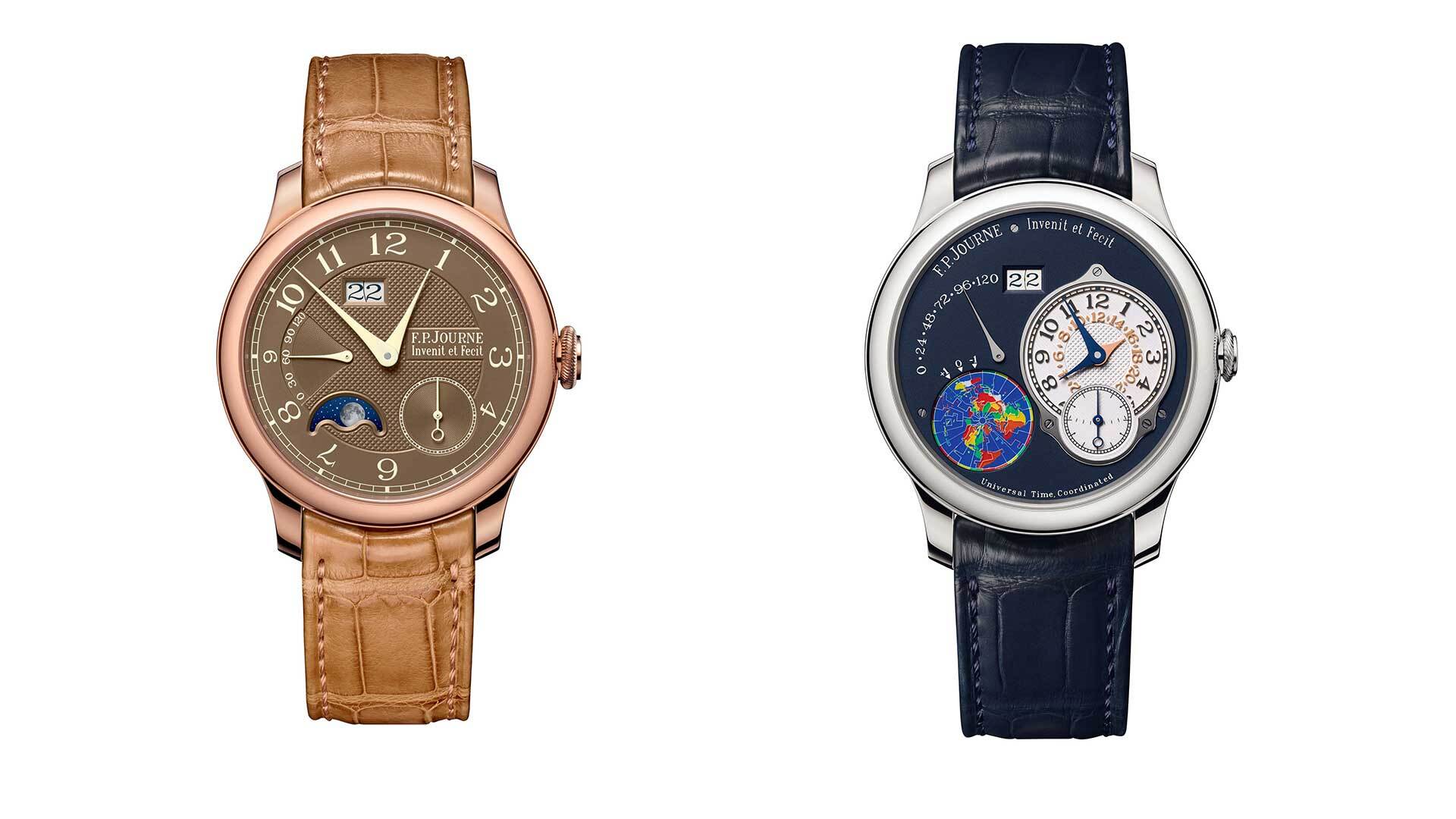
In 2015, the production of the 38mm cases ceased and the 42mm size joined the family.
But the perpetual calendar remains his masterpiece.
Following the presentation of a special version of the Octa Calendrier, produced exclusively for his Tokyo boutique and featuring a perpetual calendar instead of the annual calendar, in a titanium and gold case, FP revisited the entire calendar design and conceived an exceptional watch with indications appearing in instantaneous-jump apertures. He had now become a master of this complication: this is demonstrated by the dates indicated on two rings which have embellished his movements for years, and the creation of his Vagabondage that, in its third version, even has an instantaneous-jump seconds display on two discs.

Perpetual
In 2014 FP presented his new Quantième Perpétuel to the world. As usual, Journe’s design started from the dial, which is neat and almost symmetrical and for the first time in a perpertual calendar, all indications featured in windows: double aperture at 12 o’clock for the days and months, double aperture at 6 o’clock for the date on two discs. The power reserve is placed at 9 o’clock, opposite to the F.P.Journe logo creating a pleasant asymmetry. In the centre we find three hands: hours, minutes and year, the leap year written in red.
The indications are extremely clear and legible, for a simple use.
When you get to the date change, occurring exactly at midnight, the various discs all click together. The so-called “instantaneous” jump is reinforced by a system that, over the course of 24 hours, accumulates energy and releases it instantly, animating the discs which in turn are slowed down at the end of their journey. The show is guaranteed. Still in the name of practicality, the perpetual calendar – which is generally complex and delicate to set – is adjusted through a winding button which, in the second position, turning in one direction or the other, allows to correct the date. The month setting, on the other hand, is a different matter. Just as a secret lever to open a secret drawer on antique furniture, a lever is hidden in the lug at 1 o’clock to operate the month wheel and, consequently, the year display. Simple, intuitive and ingenious at the same time.
The Quantième Perpétuel comes with the classic gold and silver dial, or, from 2020, in an edition with Gold applied Numerals dial and guilloché pattern in the centre.
LineSport evolution
For its sports collection introduced in 2011, FP decided to combine the Centigraphe movement with the most robust and reliable calibre in his collections.
That is the FPJ 1300 calibre from the Octa Automatique Reserve, updated by adding a day/night window (2012).

In this case, the movement’s plate and bridges are made of an aluminium alloy, and it features a new titanium rotor and tungsten peripheral oscillating weight to maintain the same winding characteristics and power reserve as the Octa collection.
The new lineSport’s case is very light, made of aluminium alloy, with a rubber strap or integrated bracelet and “shockproof” rubber inserts to protect the case and bracelet. The total weight of the Octa Sport version is only 53 grams.
Since 2016, these watches are offered with a case and bracelet made of titanium – a metal with ideal qualities for a sports item as it is hard and resistant to corrosion. The weight increases by only 17 grams.
In 2019 the model was upgraded with the introduction of a new bezel inspired by the Chronographe Rattrapante – which had entered the collection the previous year with an even larger date and a new bracelet without rubber inserts. Now mature, the Octa Sport is available with a red gold case and bracelet, and a silver dial with guilloché ruthenium finish, or entirely made of platinum and featuring a beautiful deep blue dial with applied white gold numerals.

The Octa Sport is the most successful model in Journe’s sports collection, confirming its undeniable practicality.
2021 Back to the roots
And here we are at the latest creation: to celebrate the collection’s 20th anniversary, François Paul just introduced a new watch inspired by the very first Octa Reserve, with a hand satin polished yellow gold dial, silver sub dials with guilloché and printed numerals, with a stainless steel frame (reminding of the original ones) indicating only hours, minutes, date, and power reserve. This new limited edition of 99 pieces features a 40mm platinum case.

Others distinctive traits are: the movement in rhodium brass, like its predecessor; the oversized crown, more practical; and an evolution for the movement, framed by a flared réhaut, with the addition of three small openings on three bridges that allows a nice see-through effect.


An iconic model, sought after even before its release.
***
In 17 different versions and with almost twenty years of history, the masterpiece of engineering by F.P.Journe proves to be a calibre with many qualities: polyvalent and versatile, long-lived and reliable, as well as very practical and handy. FP’s intentions, underlying Octa’s development, have been confirmed and further pushed into a mechanical movement that is unique in the Haute Horlogerie panorama for its characteristics, materials and performance.
This article discusses these watches:
Related articles:
Keep up to date. Subscribe to our newsletter.
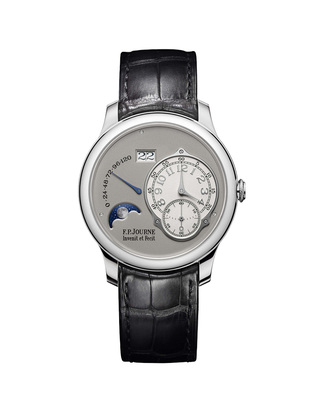






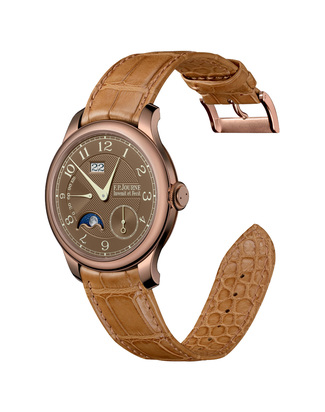


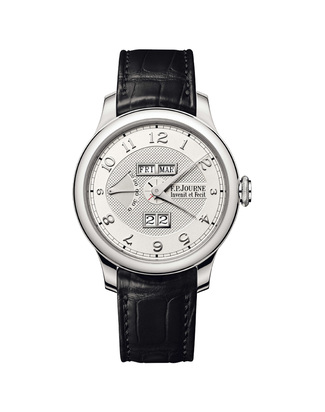




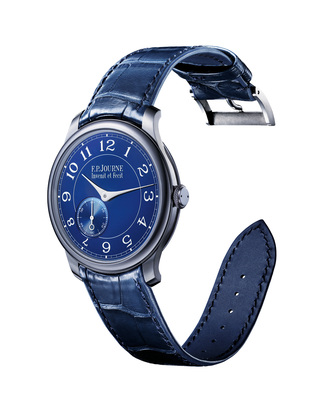


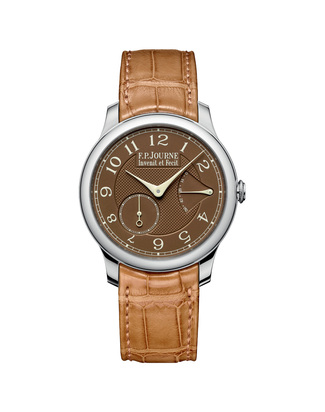


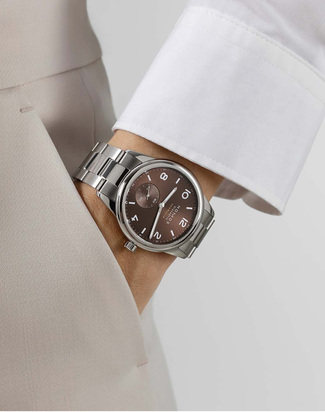






















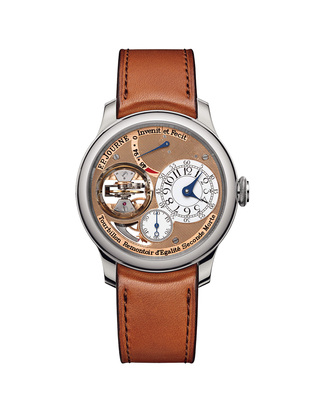





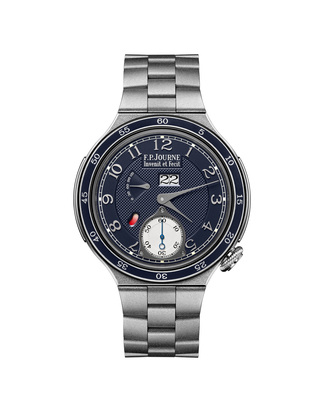





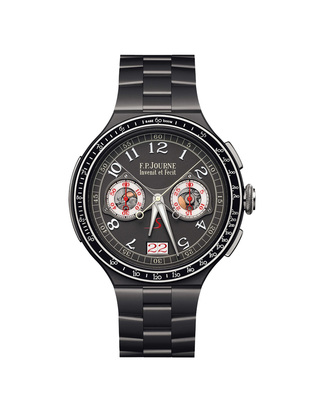




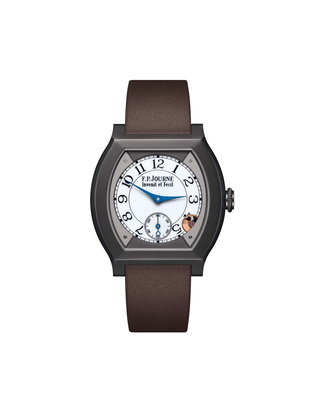



















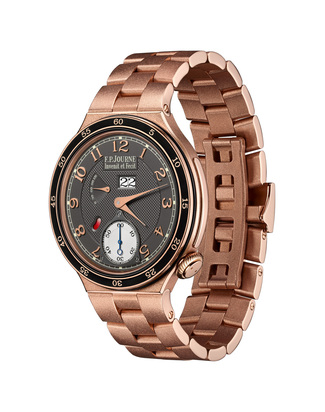









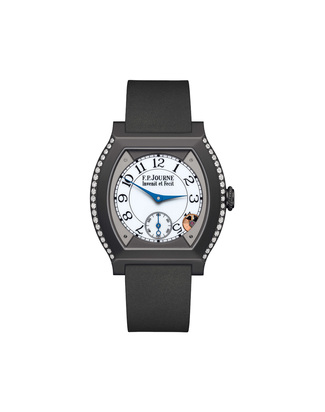

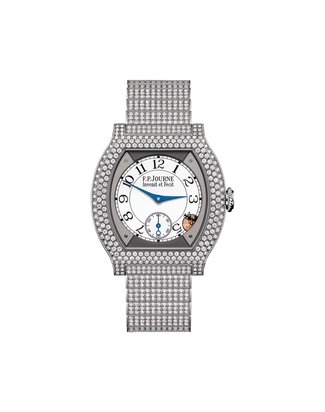



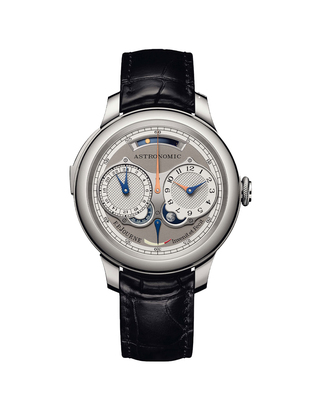

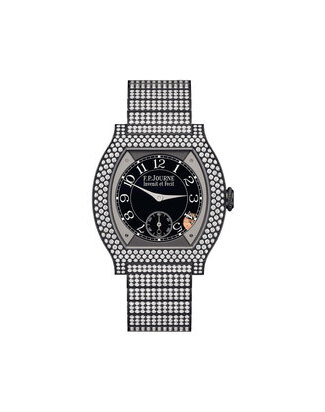

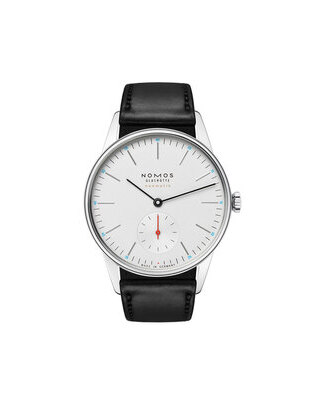

 Stories
Stories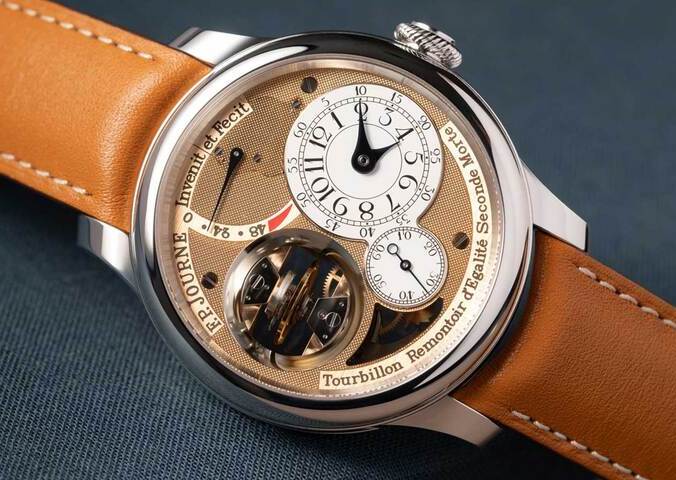 Reviews
Reviews News and trends
News and trends Reviews
Reviews Reviews
Reviews Reviews
Reviews Reviews
Reviews Innovations
Innovations Guide
Guide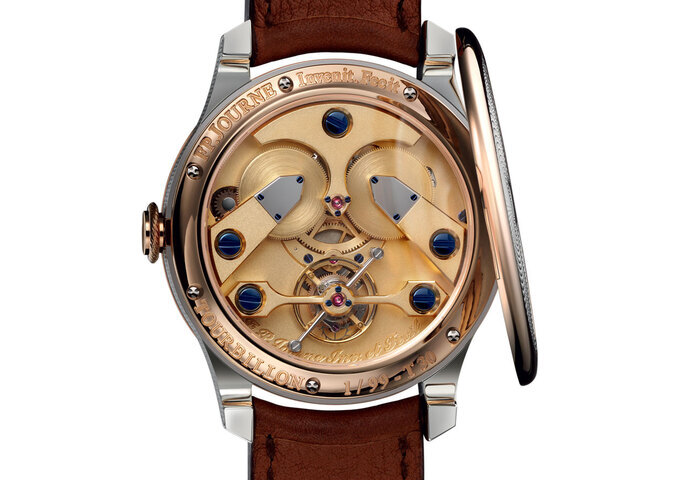 Stories
Stories Stories
Stories